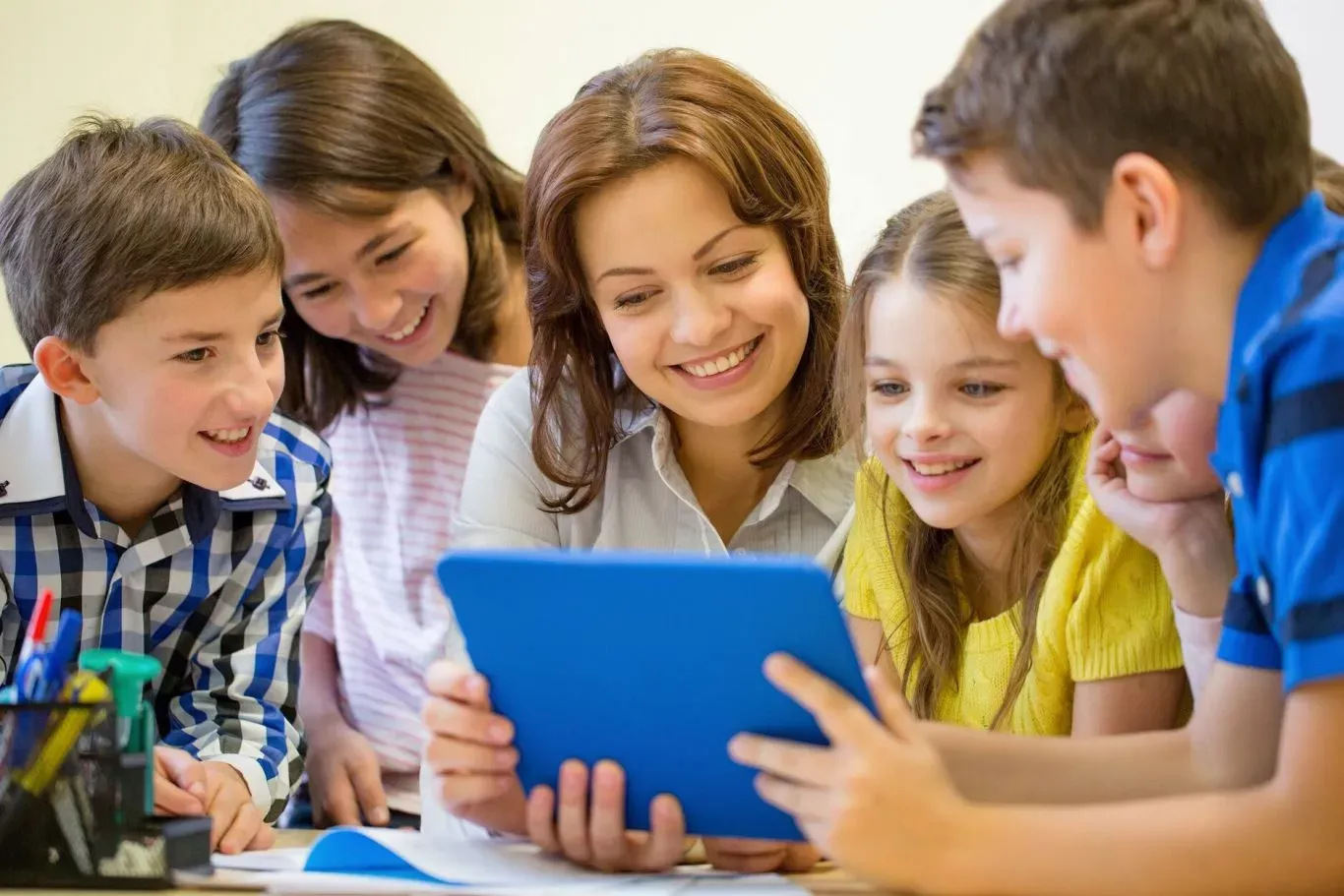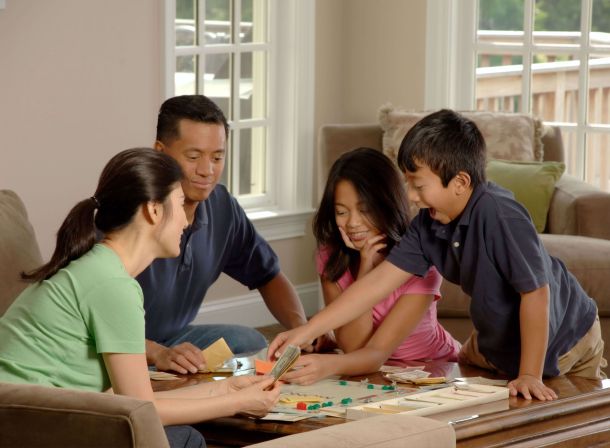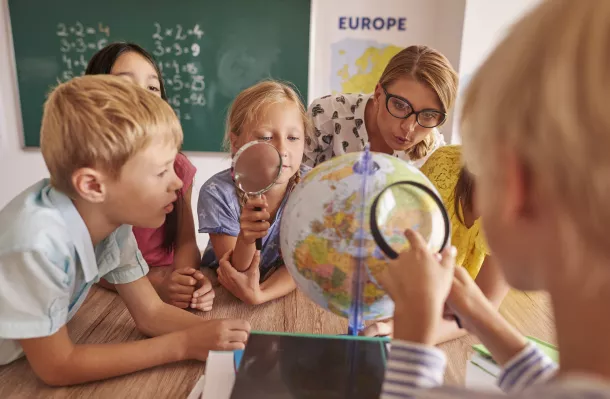
Active learning: 7 ways to apply it in the classroom
Active learning applied in the classroom is essential to the success of the teaching process as it stimulates the development of children.
Contents:
- Dan Levy: essential pillars in creating an innovative teaching process based on active learning
- 7 suggestions for applying active learning in the classroom:
Dan Levy: essential pillars in creating an innovative teaching process based on active learning
Applying active learning in the classroom is essential to the success of the teaching process as it stimulates the development of children's emotional intelligence as well as critical and creative thinking. The literature states that it is important to actively involve students in the learning process, to train critical thinking and collaboration using modern methods and tools. Thus, by promoting learning through play, debate but also by giving the pupil the chance to be in the role of a teacher; new learning is reinforced faster and more effectively.
Dan Levy, professor at Harvard Kennedy School, says that in addition to the theoretical content we prepare as teachers, it is essential to design practical and engaging activities, as they are essential pillars in creating an innovative teaching process. He also stresses the importance of communicating with students, adopting an open and flexible approach and actively listening to their suggestions to the teacher.
Dan Levy talks about 3 innovative principles in the teaching-learning process:
Principle 1. Learner-centred learning
Principle 2. Start with the ends in mind
Principle 3. Plan active learning
7 suggestions for applying active learning in the classroom
1. Involve all the senses
Research shows that when multiple senses are involved (olfactory, visual, kinaesthetic, etc.) the information is much better integrated by the learner. Active discovery learning, using concrete materials, enables the pupil to remember later not only what he has heard from his teacher, but also what he has touched, seen and experienced.
2. Train critical thinking
Active learning promotes students' critical thinking and aims to stimulate it through moments of reflection during activities. Whether we are talking about numbers, geography, art or literature, the child needs to unravel the mysteries of these areas through a guided process. If information is discovered rather than received as a result of a lecture, the pupil's motivation and willingness to engage in the process will increase. Allowing time for the child to find, outline or express an answer to a given situation is a first step towards shaping a teaching process based on active learning.
3. Encourage collaboration
Among other things, another feature of active learning involves working with others. If study time is accompanied by a collaborative activity, students will not only be genuinely involved in the learning process, but will also develop communication skills, empathy and confidence in 'working together'. According to the subject studied, each working group can be given a situation to solve, argue and complete. The teacher's role at such times is to guide, support and ensure that the purpose of the activity is achieved.
4. Use techniques and tools from management
In the group activities detailed above, you can integrate methods such as brainstorming (stimulates creativity and communication, as students are put in a position to agree on the most useful ideas), Bono hats (a method whereby the student discovers how to arrive at the best solution to a problem by moving to different perspectives), gallery tour (stimulates critical thinking and stresses the importance of arguing an opinion, but also leads to the formation and reinforcement of active listening skills).
5. Turn children into teachers
According to the active learning pyramid, teaching others is the most effective form of teaching yourself. Give children the opportunity to experience being a teacher and challenge them to prepare presentations for the rest of the class on a particular topic. This suggestion is helpful in promoting active learning as the pupil is directly involved in the process of discovering new information, understanding the importance of feedback from both the teacher and peers, practicing public speaking skills and becoming self-taught.
6. Promote learning through play
Role-play is a great way to develop problem-solving skills, support self-discovery and facilitate group cooperation. In the Cambridge Dictionary, role-playing is presented as a tool through which the learner can practice empathy, creativity and finding solutions to real-life situations. Active learning takes place through this suggested activity, as the learner is able to apply and relate theoretical concepts to real-life moments.
7. Encourage debate
Debate is a structured approach that stimulates critical thinking, the power of argumentation of a perspective and creativity in finding innovative ideas; also, through this suggested active learning activity, the learner understands that in many moments in real life we can have opinions that are even contradictory to those around us. Debates provide students with the necessary context to train or practice their public speaking skills, an important skill for their educational journey and beyond.
The list of suggested activities through which we can implement active learning can be completed. The first step towards bringing a learner-centered process to the fore should be a discussion highlighting the real benefits of active learning for the child. Some learners may find it difficult to participate in a complex active learning activity, therefore it is recommended that the shift from a lecture-only activity to one in which the learner is involved should be gradual.
How Kinderpedia supports active learning and the transition to a modern classroom
Kinderpedia supports active learning by making it easy for teachers to provide students with a variety of interactive and engaging resources that encourage them to take an active role in their own learning. Also, it keeps parents connected and engaged in students’ education. It allows schools to gather and analyse data at different levels, with the purpose of improving learning, as well as the overall teaching practice.
Kinderpedia
The complete communication and management solution for schools and childcare centres.
Simplifies teachers' work and brings parents closer to their children's school progress.
Recommended articles
Want to improve your center quality? Kinderpedia is here to help! Not only do we provide thousands of informational content pieces like blog posts, podcasts, webinars and more, we are also makers of the #1 Rated and Reviewed Childcare Software.







